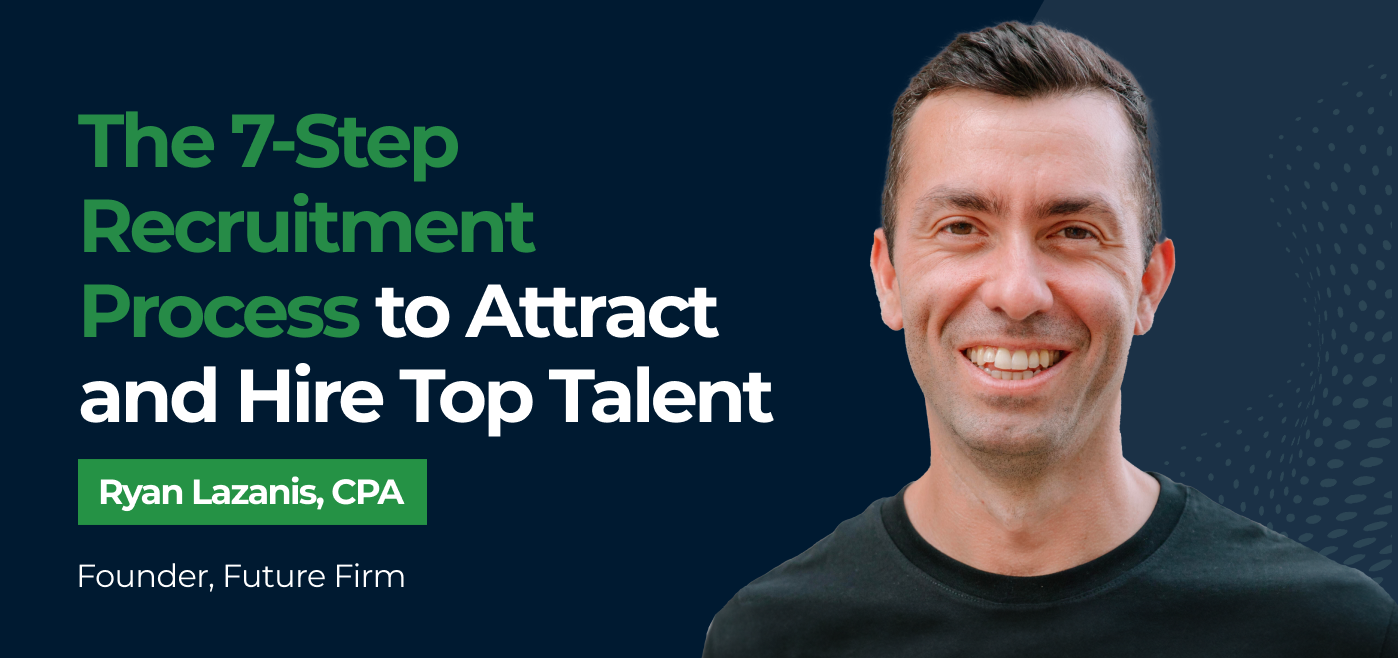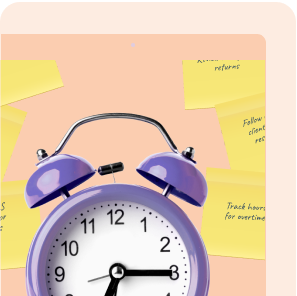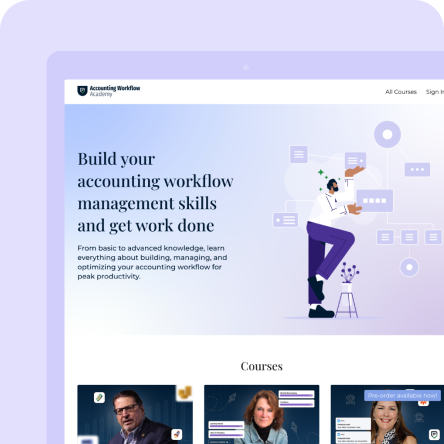Hiring great people is hard. Keeping them is even harder.
If you’ve been burned by a hire who looked amazing on paper but fell flat in execution, you’re not alone. According to Ryan Lazanis, CPA and founder of Future Firm®, almost 1 in 2 new hires fail within the first 18 months. Let that sink in. And it’s not because they don’t know how to do the work; they don’t have the right attitude.
This guide isn’t about fluff. It’s about the exact 7-step recruitment process Ryan developed after years of hiring, struggling, learning, and finally building the kind of team that made his firm acquisition-worthy in just five years. This is the blueprint if you’re serious about building a high-performing, loyal, and values-aligned team.
Step 1: Write a Job Post That Sells
If you’re not attracting top-tier candidates, the problem often starts with your job post, not your salary, not your firm’s reputation, not your job post.
Most firms treat job ads like cold, cluttered, and painfully forgettable legal memos. They copy-paste boilerplate text from 10-year-old HR docs, slap it onto LinkedIn or Indeed, and then wonder why only a trickle of unqualified applicants come through.
“Whenever a firm tells me they’re struggling to find good people, the first thing I ask for is their job post,” Ryan Lazanis said at WorkflowCon 2024.
And 9 times out of 10, it’s a boring list of duties and requirements. No personality. No soul. No story. And no one great wants to apply to that."
So how do you fix it? Treat your job post like a sales page because that’s exactly what it is.
Sell the Dream, Not Just the Duties
High performers don’t want just a job. They want meaning, challenge, and impact. They want to know what makes your firm different. They want to know why they should choose you over the dozens of other options they’re exploring.
So your job post needs to do two things really well:
- Clarify who and what you’re looking for
- Sell the position and your firm to the right people
The second point is what separates a high-converting job post from a dead listing.
“Your job post isn’t just about describing the work—it’s about inspiring the reader,” Ryan explained. “It needs to answer the question: ‘Why should a top-tier candidate care about this role?’”
Instead of saying, “We’re hiring a bookkeeping associate to handle reconciliations, payroll, and data entry,” say,
As a bookkeeping associate, you’ll help our small business clients thrive by managing the financial data they rely on to grow and succeed. Your work will directly impact families, communities, and entrepreneurial dreams."
One sounds like a task list. The other feels like a mission.
Give Them Clear Reasons to Join You
This is your “Why Join Us” section, and it should appear high in the job post. Ryan recommends placing it before the list of responsibilities or qualifications, not after.
“Don’t bury the good stuff. Lead with it,” he said. “Think of this as your elevator pitch for the role.”
Include things like:
- What makes your culture special
- Your mission and client focus
- Flexibility, remote work policies
- Tools and tech you use
- Paid time off, personal growth opportunities, learning stipends
- Team retreats, wellness budgets, or unique perks
Even if you’re a small firm, you’ve got a story. You’ve got values. You’ve got something worth sharing. Don’t hide it.
Here’s a real-world example from Ryan’s presentation:
At Future Firm, we’re not just changing how accounting is done, we’re building the kind of workplace we always wanted to work for. A place where autonomy, creativity, and flexibility aren’t buzzwords; they’re the baseline."
Can your job post say that? If not, it should.
Highlight the Impact of the Role
Most job descriptions focus on responsibilities. But the impact is what attracts high-performers.
Instead of saying:
- “Prepare monthly reports” Say:
- “Help business owners make smarter decisions by delivering clear, accurate financial reports they can trust.”
Instead of:
- “Complete payroll and bank reconciliations” Say:
- “Ensure our clients sleep soundly at night knowing their finances are in order.”
It’s subtle. But it speaks volumes.
Step 2: Post It Where A-Players Hang Out
You’ve nailed your job post, and it’s clear and exciting. It speaks to real humans. Now what? It’s time to distribute it. But not just anywhere. “Most firms post to one or two places, sit back, and hope the right person shows up,” said Ryan Lazanis. “But high performers? They don’t live on Indeed. And they’re not always actively job hunting. So if you want them, you must go where they are.” This is about maximizing visibility strategically. You’re not just broadcasting. You’re fishing with precision, using channels that consistently attract serious, high-quality candidates.
Tap Into Team Referrals
High performers know other high performers. Ryan calls this the “highest quality sourcing strategy available.” Your best hires probably know someone just like them. So incentivize referrals; don’t just hope they happen. Set up a referral bonus, make it easy to share the job link, and let your team do part of the heavy lifting. When a trusted teammate vouches for someone, it lowers your hiring risk dramatically.
Use LinkedIn
LinkedIn is still valuable, but not passively. Ryan recommends using LinkedIn Recruiter to send personalized DMs to qualified candidates. “Our most senior hires came from cold LinkedIn messages. I just searched, shortlisted, and sent a personal note.” Highlight shared interests, align the role with their experience, and speak to their aspirations, not just job requirements.
Leverage Niche Facebook Groups
This one catches many by surprise. If you’re hiring offshore or niche roles, Facebook groups are gold. Search for accounting-focused groups in the Philippines, remote finance communities, or fractional roles. Post a friendly hiring message and lead with perks. Groups like these act like digital bulletin boards where people engage quickly and informally, making it easier to surface genuine interest.
Optimize Your Careers Page
If your website has any kind of traffic clients, prospects, or accounting newsletter readers, you’re missing opportunities if you don’t have a visible, high-converting careers page. “People are already checking you out. Don’t make them hunt for open roles,” Ryan said. Include your job postings, showcase your culture, add testimonials, and link directly from your homepage navigation. Your careers page should feel like a landing page built to attract, not just a static list of open roles.
Post to Niche Job Boards
Mainstream platforms like Indeed and ZipRecruiter cast a wide net. But niche platforms give you direct access to a more focused talent pool. Use OnlineJobs.ph to find high-quality offshore virtual assistants. Post to CPA association boards like CPA Ontario and CPA Canada if you want licensed talent. For tech or specialized roles, post in industry-specific job boards like WordPress Jobs, Dribbble, or We Work Remotely. The narrower the channel, the better your targeting.
Be Your Own Recruiter
Recruiters can work, but they’re expensive and inconsistent. Ryan used them in the past and paid steep fees, only to see hires walk away months later. “Now, I just recruit myself,” he said. LinkedIn makes it easy. Use filters, build shortlists, and write personalized outreach messages. It’s time-consuming, yes, but you own the process, the relationship, and the outcome.
Step 3: Automate Screening with One-Way Interviews
Time is your most limited resource—and wasting it on the wrong candidates is one of the most costly, silent killers of your recruitment momentum. You don’t just want applicants. You want aligned, ready-to-go professionals who pass the vibe check and share your values before you ever jump on a live call. That’s where one-way interviews come in. Ryan Lazanis swears by them. “If they won’t complete a one-way interview, I don’t want them on the team,” he told the crowd at WorkflowCon 2024. This step filters the curious from the committed automatically.
What Is a One-Way Interview?
Instead of manually booking 20 intro calls for each new job post, you set up a structured video questionnaire using a tool like Spark Hire, Willo, or Vervo. You create 3 to 5 questions. Candidates receive a link. They record short video responses—on their own time. You review their responses—on your own time. No scheduling. No awkward Zoom intros. No wasted mornings. It’s asynchronous, efficient, and incredibly revealing.
Why It Works
The one-way interview process isn’t just about saving time—it’s about screening for what really matters. You’re not just listening for polished answers. You’re watching for clarity, energy, authenticity, communication style, and attitude. “One of the biggest traits I’m looking for early is coachability,” Ryan shared. “Can they take direction? Are they thoughtful in their responses? Do they sound like someone I’d want to work with?” Most importantly, this step quickly filters out low-effort applicants. The people who ghost, delay, or half-bake this step? They would’ve cost you way more down the line.
What Questions Should You Ask?
Ryan recommends asking open-ended, reflective questions that tap into mindset, not just technical experience. For example: “Tell us about a time you made a mistake at work. What happened, and what did you learn?” “Why do you want to work with our firm in particular?” “What kind of work culture helps you do your best work?” These questions test emotional intelligence, communication, and alignment. You’ll also notice who took the time to research your firm—and who’s just mass applying.
How to Set It Up
Pick your tool—Spark Hire and Vervo are two of Ryan’s top picks. Create a short intro video welcoming candidates and explaining the process. Add 3 to 5 structured questions. Keep instructions clear. Give a firm deadline to complete it.
Pro tip: Set expectations early in your job post so no one’s caught off guard. Mention that this step is part of your screening process, it shows you take hiring seriously and respect your time and theirs.
How to Evaluate
Don’t overanalyze. You’re not looking for movie stars, you’re looking for cultural alignment, clarity, and effort. Build a scoring rubric: Did they answer the question fully? Did they communicate clearly? Did they show professionalism? Were they prepared? Watch with your team if possible and compare notes. If they pass, move them to the interview round. If not, you’ve just saved yourself 45 minutes.
Step 4: Use Strategic Interviews to Identify Attitude Fit
At this point, you’ve filtered applicants through a compelling job post and an automated screening process. Now it’s time for the most high-stakes step in your recruitment process. This is where you speak face-to-face. It’s not about memorized answers or polished resumes. It’s about discovering who this person is and whether they’ll thrive inside your team. “This is the step where most firms mess up,” Ryan Lazanis said at WorkflowCon 2024.
They get too focused on credentials and overlook the most important success factor, which is attitude."
Hiring the wrong mindset can derail your culture. Hiring the right one can supercharge it.
Why Attitude Is the True Deal Breaker
According to Ryan, 89% of failed hires do not flame out because they lack technical skills. They fail because they have the wrong attitude. They are defensive, resistant to feedback, unreliable, or lack the curiosity and ownership required to adapt and grow. “Technical skills are easier to teach than attitude,” Ryan explained.
If someone is humble, coachable, and cares about doing great work, you can teach them the rest. But if they’re not aligned behaviorally, it’s a ticking time bomb."
Attitude dictates how someone responds under pressure, receives feedback, communicates with teammates, and represents your firm when you are not in the room. In short, it affects everything.
How to Structure the Interview
Ryan recommends a three-part interview structure that helps you build rapport while uncovering deep behavioral clues. First, begin with warm-up questions to ease tension and get natural conversation flowing. Second, ask goals-based questions that give you insight into motivation, direction, and alignment. Third, and most critically, dig into attitude and behavior.
Ask questions like, “Tell me about a mistake you made at work and how you handled it.” Or, “Describe something that frustrated you at a previous job. What did you do about it?” Listen not only to the answer but also to how the candidate frames their story. Are they taking responsibility? Are they productively framing the problem? Are they learning or blaming?
Another strong prompt: “Tell me about a time you received feedback that was tough to hear. What did you do afterward?” This reveals openness, self-awareness, and willingness to grow. “A strong candidate will talk about how they processed and applied that feedback,” Ryan said. “A poor fit will brush it off or get defensive.”
What to Watch For
Ryan suggests watching out for signs of humility, ownership, and self-motivation. A red flag is when a candidate cannot identify something they’ve done wrong or never takes personal accountability. Look for people who use “I” when taking responsibility and “we” when talking about success, not the other way around. Also, pay close attention to how they talk about former managers or coworkers. Negativity and blame are flashing signs of future conflict.
Another thing to observe is whether the candidate asks thoughtful questions. Curious people ask about the team, culture, expectations, and success metrics, while disengaged ones ask only about salary and benefits.
A curious candidate is a growth-minded candidate"
Step 5: Run Real-World Skill Tests That Simulate the Role
So far, your recruitment process has filtered for attitude, culture fit, and communication. But now comes the most practical question of all. Can they do the job? You can’t afford to answer that question with a gut feeling. You need proof. That’s why Ryan Lazanis insists on integrating real-world skill testing into every hiring process. “The interview tells me who they are,” Ryan said at WorkflowCon 2024. “The test tells me how they work. I need both to make the right decision.”
A strong portfolio or a slick interview is not enough. You want to see how candidates perform in the environment they are being hired into. Do they follow instructions? Do they think critically? Can they manage details without oversight? These things show up in a test and often stay hidden in interviews.
Why You Should Simulate the Actual Role
The key is to make the test feel like a natural extension of the job. Do not ask for random puzzles or abstract hypotheticals. Instead, give them a task that closely resembles what they will do in their first 30 days on the job. For example, if hiring a virtual assistant, ask them to follow a real SOP to complete a task. Ask them to record a short Loom video explaining their process. If the role is client-facing, include a test that simulates writing a clear, professional email. If you are hiring a bookkeeper, send a basic data set and ask them to clean it or reconcile an account. For tax professionals, have them review a mock return and flag issues.
“Don’t just test for technical accuracy,” Ryan explained.
Test for how they follow instructions, how they communicate their thought process, and how well they manage ambiguity."
What to Include in the Test
Build a test that takes no more than one to two hours to complete. Include a short brief with clear instructions, access to necessary files, and a due date. Test components might include the following. For admin roles: Follow a checklist and record a five-minute walkthrough using Loom. For accounting roles: Review financials and spot three to five errors. For client roles: Draft a response to a client complaint or question. You are not just testing execution. You are testing how someone thinks under light pressure, how they approach unfamiliar tasks, and whether they can operate with minimal supervision.
Make the Test Fair and Paid
Respect your candidates’ time. Ryan recommends paying candidates a small stipend for completing the test, especially if it requires more than 30 minutes. “It shows respect,” he said. “And it filters out those who are just mass applying.” A paid test also positions your firm as professional and thoughtful. Candidates will remember that. It makes your firm stand out.
What to Watch For When Reviewing
Do they follow instructions exactly as given? Or do they skip steps and cut corners? Is their communication clear and confident? Do they ask clarifying questions or make dangerous assumptions? Review the deliverable with the mindset of a client or internal stakeholder. Would you feel confident letting this person handle similar work with minimal review? Do they show care and pride in the quality of their output?
You have your answer if a candidate fails to follow instructions, drags out the timeline, or submits something sloppy. “It’s better to learn that now than three months into the job,” Ryan said.
Step 6: Do Reference Checks
You’ve screened, interviewed, and tested. You’re almost there. The candidate looks great on paper and performed well under pressure. But before you send that offer, you need to run one last filter. The reference check. This step gets skipped too often, usually in the name of speed or assumed certainty. That’s a costly mistake.
“Reference checks are the last line of defense,” Ryan Lazanis said at WorkflowCon 2024. “They rarely change my decision, but when they do, they save me from a bad one.”
This step is not about bureaucracy. It’s about verification. You want to confirm what you’ve observed, uncover anything the candidate might not have disclosed, and validate your gut instincts.
Keep the Process Simple and Light
You don’t need a 30-minute phone call with every manager your candidate has ever worked with. Ryan recommends the opposite. Keep it brief, respectful, and lightweight. Send an email with three to five clear questions. Give the referee space to answer honestly. Most people prefer asynchronous communication anyway. You get faster responses, better information, and lower friction.
Make your message friendly and non-confrontational. Let them know the candidate is in the final stages, and you’re simply looking for insight to ensure the best fit on both sides.
Ask the Right Questions
The key to a useful reference check is in the questions. Skip vague prompts like, “Was this person good to work with?” Instead, go deeper with open-ended, behavior-focused questions that encourage candid insights. Here are a few Ryan recommends: “What kind of work environment did this person thrive in?” “How did they respond to feedback or coaching?” “Can you describe how they handled a challenge or mistake?” “Is there anything you’d want their future manager to know about supporting them effectively?” These questions uncover soft skills, coachability, and communication tendencies. They also give former managers an opening to raise quiet red flags without directly criticizing the candidate.
Watch for What’s Not Said
Pay close attention to tone, brevity, or missing detail. If a referee gives short, generic answers or avoids giving specific praise, that’s worth noting. “No one’s going to outright bash a former employee,” Ryan said. “But if they struggle to describe strengths or stall on giving examples, that tells you plenty.” Likewise, if a former supervisor goes out of their way to be enthusiastic, that’s equally telling. The energy behind the reference speaks volumes.
Use the Reference to Validate Your Decision
You are not looking for perfection. Every candidate has areas for growth. What matters is alignment. If the reference reinforces your impression of the candidate’s strengths and challenges, that is a green light. Pause and reassess if it introduces significant concerns that were not visible during testing or interviews. “You want to walk into a new hire with your eyes wide open,” Ryan explained. “The reference should confirm what you think you know.”
Document and Discuss with Your Team
Keep a short summary of what you learned. If other team members were part of the interview process, share key insights from the reference to align expectations. Use it to prepare staff onboarding and management strategies. For example, if a reference says, “They thrive with structure and struggle with vague instructions,” then plan to provide tighter SOPs early on. References are not just a safeguard. They are a tool to help your new hire succeed.
Step 7: Present an Irresistible Offer (And Set Expectations)
You’ve found your person. They passed every test. They aced the interviews. Their references confirmed what your gut was already telling you. Now comes the moment of truth. You need to lock them in. Presenting your job offer can either seal the deal or introduce hesitation. “Too many firms make great offers feel cold,” said Ryan Lazanis at WorkflowCon 2024. “You can lose a perfect-fit candidate not because of the numbers, but because of how the offer made them feel.” This final step is where you shift from recruiter to closer.
Timing Is Everything
Top talent does not sit around waiting. If your hiring process has taken a few weeks, the candidate is now speaking to other firms. You must move fast if you want to keep the momentum and secure the commitment. Aim to make the offer within forty-eight hours of your final internal decision. The longer you wait, the more room you leave for second thoughts or outside offers. “I’ve lost great candidates because I waited three or four days,” Ryan admitted. “Now, I make it a priority to close the loop quickly.”
Make the Offer Feel Personal and Exciting
Your offer should not feel like a cold contract delivery. It should feel like a celebration. Ryan recommends presenting the offer in a live video call or phone call before sending anything in writing. Lead with enthusiasm. Reinforce the value you see in them. Recap what excites you about bringing them on board. The,n walk them through the offer step by step. This live interaction builds energy, answers questions on the spot, and engages them emotionally. “People want to feel wanted,” Ryan explained. “If you’re excited, they will be too.”
Eliminate Haggling Where You Can
While negotiation is a natural part of many offers, Ryan believes in keeping the process as clean and straightforward as possible. Start with your best and fair number based on the market, the role, and the candidate’s experience. If they push back with a reasonable counter, be prepared to respond quickly, but try not to let it drag out. “When an offer drags into days of back-and-forth, it starts to feel transactional,” Ryan said. “And that’s the last thing you want in a trust-based hire.”
He also recommends including meaningful perks beyond salary to boost perceived value. This could include remote work flexibility, professional development budgets, additional time off, wellness stipends, or performance bonuses. A well-rounded offer package often holds more weight than a small bump in base pay.
Be Transparent About Expectations
This is your opportunity to be real. Do not paint a perfect picture. Be honest about current challenges, systems in transition, or the learning curve ahead. Ryan suggests saying, “Here’s what we’re excited about, and here’s where we’re still working through things.” Candidates respect transparency. It positions you as a leader who values alignment over salesmanship. “Setting expectations early reduces early attrition,” Ryan noted. “They know what they’re walking into and feel like partners, not employees.”
Use a Light Deadline to Maintain Urgency
Once you’ve made the offer, give the candidate space to consider—but not unlimited time. A gentle deadline maintains urgency and keeps your hiring timeline clean. A simple line like, “We’d love to have your response by Friday so we can begin onboarding plans,” is respectful and effective. Most serious candidates will appreciate the structure.
Handle Second Thoughts with Empathy
If the candidate hesitates, lean in with empathy. Ask what concerns they’re weighing. Reaffirm the value you see in them. Share how the team is preparing for their arrival. Make them feel like this is more than a job. It is a place they can grow and belong. “Sometimes a little reassurance goes a long way,” Ryan explained. “People want to know they’re making the right choice. Help them see it.”
Your Hiring Process Is a Sales Process
Most accounting firm owners treat hiring like a checklist.
If you really want to build a team that drives your firm forward, you need to think differently. According to Ryan Lazanis, your hiring process is not administrative. It is strategic.
You’re selling the opportunity to work with you and if you’re not selling it well, the best candidates will pass you by without a second thought. The top 10 percent of candidates are not desperate. They have options. They are evaluating you just as critically as you are evaluating them. They are gone if your process feels cold, confusing, generic, or slow. You never even knew what you missed out on.
The best firms hire with purpose. The best hires don’t just do the work. They build the future with you. Sell them on that future, and you won’t just fill roles. You’ll transform your firm.






